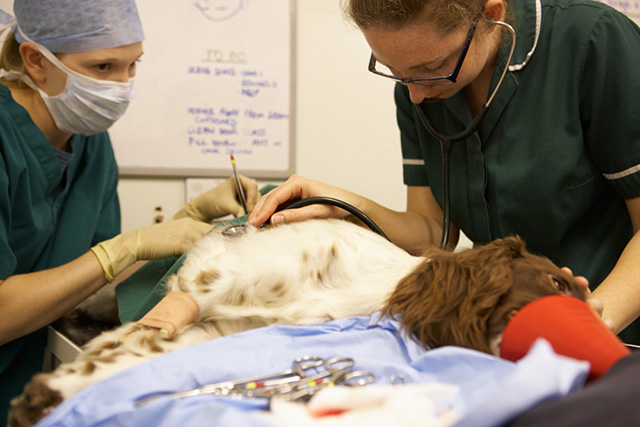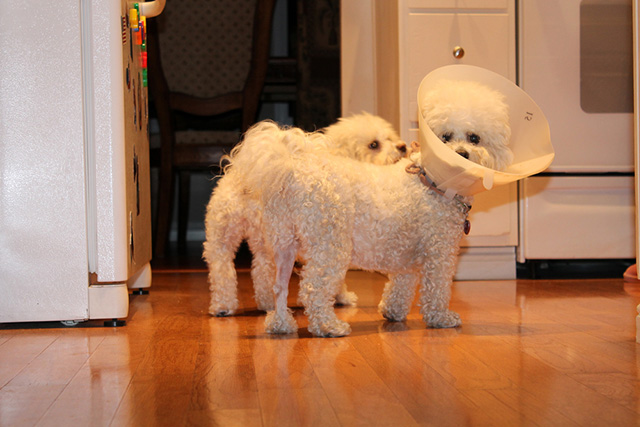Due to illness, disease or trauma, your dog may one day require surgery. While always stressful (for both you and your dog) there are a few basic guidelines that you can follow that will make the process as complication-free as possible and put your pet on the fast road to recovery.
Depending on the type of surgery, whether minor or major, your veterinary surgeon will advise you when your dog can resume a normal lifestyle.
Caring for your dog before surgery
- Your veterinary surgeon will do a check-up on your dog before the surgery to determine if there are any pre-existing conditions that may interfere with the surgical procedure.
- Make sure your dog is up-to-date with annual vaccinations.
- Your veterinary surgeon may suggest a blood test to screen for disease not apparent from a physical exam.
- You may need to administer antibiotics prior to surgery to help control pre-existing infection for certain procedures. Speak with your veterinary surgeon to find out what are the restrictions for food and water.

Caring for your dog after surgery
- Chances are your dog will be weak or groggy after surgery. Do not let him/her get too excited.
- Restrain your dog with a lead or put him/her in a carrier when leaving the hospital. This will protect him/her from additional injury.
- Provide only small amounts of food and water until your dog readjusts to being at home and is recovering. Too much food and water can lead to upset stomachs or vomiting.
- If a special post-surgical diet has been prescribed, follow all instructions carefully.
- Limit your dog’s exercise. Climbing stairs, jumping or running may open up sutures or cause nausea.
- Make sure the sleeping area is clean, warm and free of draughts.
- Your veterinary surgeon may prescribe medication to administer during your dog’s recovery. Follow all label instructions carefully.
- Sutures are usually removed approximately 10 days after surgery. Check the area around the incision daily for redness, swelling or drainage. If you detect any irritation, contact your veterinary surgeon immediately.
- Try to keep your dog from licking or chewing on the wound. If this is difficult to do, you might want to provide a physical barrier like a bandage or tee-shirt or by placing an ‘Elizabethan collar’ around the head.

